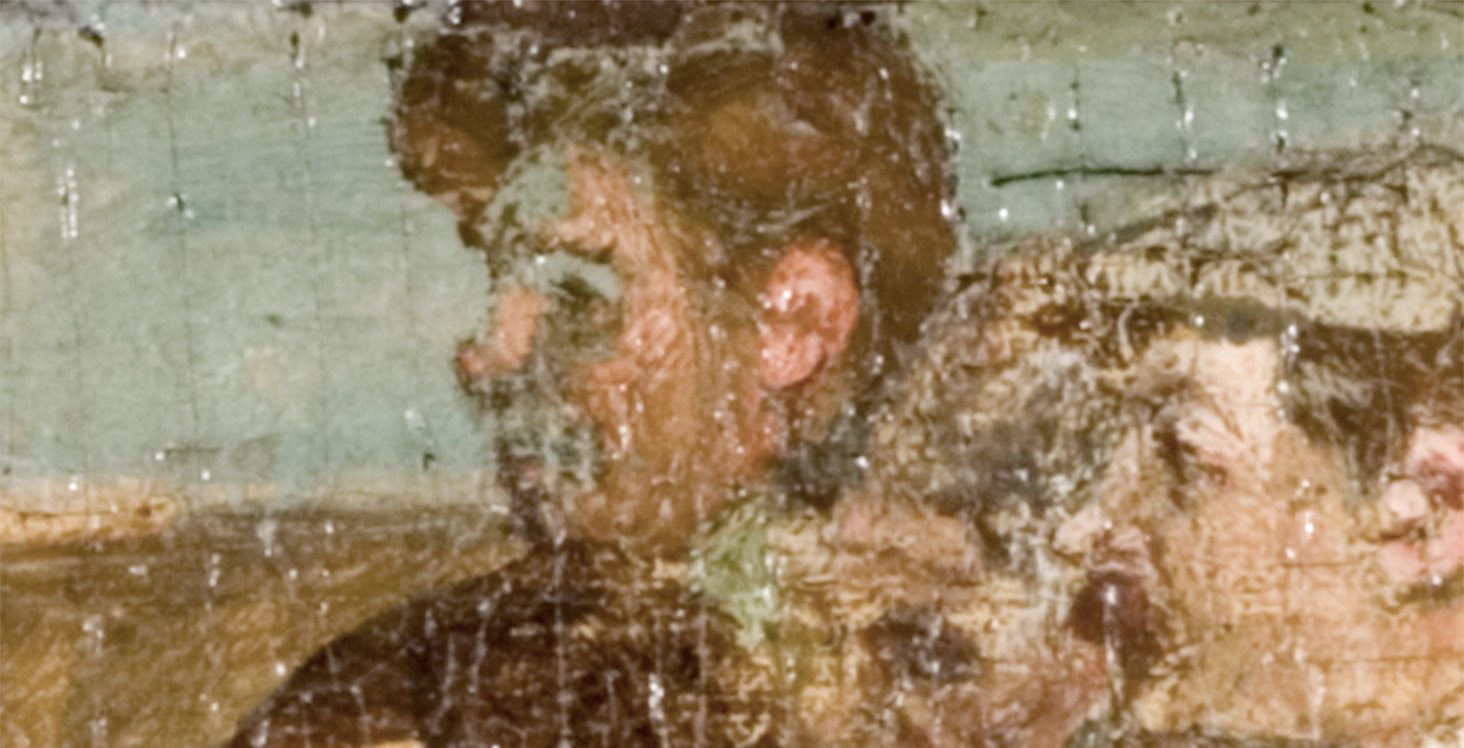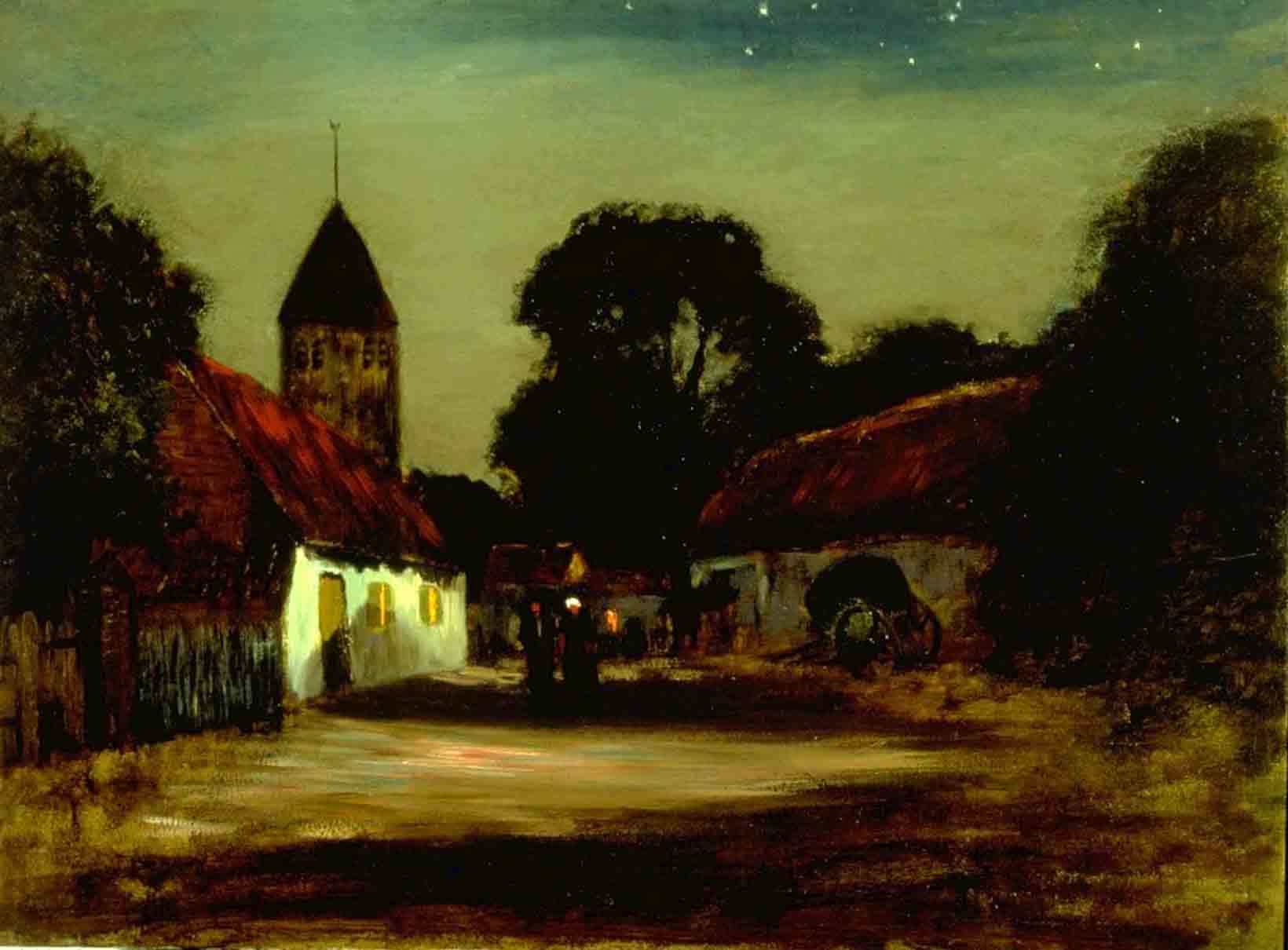Fox Chase
George Bogert
- The Museum will be closed Sunday, April 9 in observance of Easter.
Only George Bogert’s handsome head can be seen above the rest of the artists running down Lyme Street in pursuit of the fox.
Although a part of the original composition, this profile is newer, added by Poore after the first face was scratched out with a penknife by William Henry Howe.
George Hirst Bogert
Born February 6, 1864, New York City
Died December 13, 1944, New York City
Exhibited in Old Lyme, 1915-1928
Howe was furious with Bogert for allegedly leaving the boardinghouse with his bill balance unpaid. Nevertheless, Bogert’s meager presence is somewhat indicative of his involvement with the Lyme Art Colony. Records show that he exhibited paintings in the Old Lyme exhibitions between 1915 and 1928, but his being in The Fox Chase indicates that he was in residence with the artists sometime during the first five years of the colony.
By this time, he was an established artist having trained in America under the noted painter Thomas Eakins in New York. He later studied in Paris with other great painters. Before coming to Old Lyme, Bogert had won a handful of bronze and gold medals for his art.

In New York, Bogert lived the life of a Bohemian artist “in a romantic atmosphere.” As one of his acquaintances reveals, Bogert was “an aristocrat every inch [who] preferred to muse mentally and artistically in Venice . . . the joy of life made it difficult to go to bed. Breakfast at noon when his friends were at lunch.” One painting the Museum owns by Bogert is a tonal masterwork in blue of a Venetian lagoon.
He was always on the move, leaving one studio for another “always looking for a better place.” Once in his studio, however, you felt as if you were in the old world with a splendid canvas on the easel under way. Bogert was very popular in the marketplace, and often had no pictures to sell. Art dealers were known to come up to him on the street and plead to let them sell his next painting.



